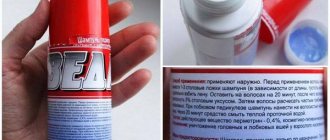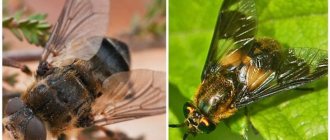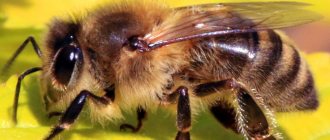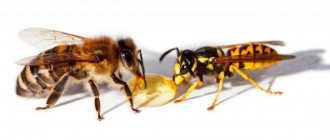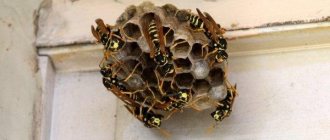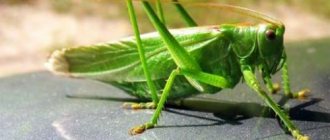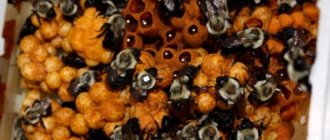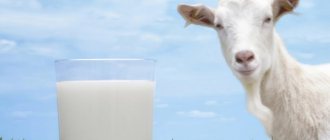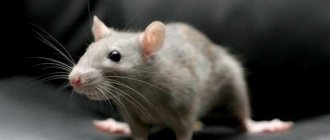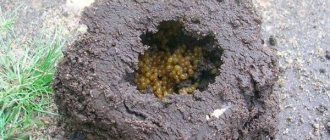Mucor mushroom is also called white mold. Its mycelium is an interweaving of whitish hyphae and looks like a fluffy white coating. Mucor sporangia have a black tint, so after a while the white mold turns black. Mucor can be seen, for example, on bread and other foods. It is also found in the upper layers of the soil, on organic residues.
If the bread sits for several days in a warm, damp place, a white fluffy coating appears on it, which darkens after a while. This is a mold fungus-saprophyte mucor. This fungus also often lives on fruits, vegetables, horse and cow manure. Its mycelium is one overgrown and branched cell with many nuclei. It permeates the product on which the fungus has settled and sucks nutrients from it. A young mushroom is white or beige; old mold is more black in color (heads with mature spores protrude).
Mukor belongs to the kingdom Mushrooms, division Zygomycota. Scientists believe that mucor fungi existed already in the Proterozoic era. An invaluable contribution to the study of mold was made by the work of our compatriot, mycologist N.A. Naumov (1888 - 1959), who described about two hundred of its species. Mucor is a mold fungus, so it is considered a saprophyte (for more details, see the article “Food chain in nature - diagrams, links and examples of chains”). This means that it feeds on the waste products of plants, animals and people.
Mukor mushroom: description, practical application. What is the danger of the mushroom
Mukor is a fungus from the genus of molds that appears on food, soil, and organic plant matter when their storage conditions are violated.
At the initial stage, it looks like whitish fluff, which is why its second name is white mold.
As the colony matures, sporangia begin to form for further reproduction of the fungus. They give mucor a grayish or beige color, and by the time they ripen they turn completely black.
Mushroom structure
Under a microscope, a mucor colony looks quite interesting. Its basis is mycelium, which is a large branched cell with many nuclei.
With the help of white threads (hyphae) this body is fixed in the soil. Like real roots, these threads branch, becoming thinner towards the edges of the mycelium.
Mold visible to the naked eye is sporangiophores - hairs growing from the main body, the mycelium.
If the parasite has settled in comfortable conditions, then these hairs will reach several centimeters in height. During the process of mucor maturation, sporangia appear on sporangiophores - capsules containing spores for reproduction.
If at this stage of development you look at the mushroom under a microscope, its appearance will be similar to a pillow covered with pins. Therefore, this mushroom is often called capitate mold.
At the last stage of growth, the sporangium membranes of the mucor burst, and thousands of mature spores, ready to give life to the next generations of fungal colonies, scatter in all directions. Due to their microscopic size, they can only be seen with the help of special equipment.
Reproduction
Mucor reproduces in two ways:
- using spores. To grow them, he needs good nutrition, warmth, access to moisture and fresh air. Ripe spores spread through air masses;
- sexually. If the soil on which the colonies grow is no longer capable of feeding them, then the hyphae of different mycelia begin to come closer together, connecting with their gametangial heads. As a result of this fusion, a spine-covered zygote is formed. After maturation, its shell bursts, releasing the embryonic mycelium, on which sporangia with spores appear for sexual reproduction. And only their combination leads to the creation of a full-fledged powerful mushroom body.
There is no place in the world where mold has settled. It is found on the walls of nuclear reactors, on orbiting satellites, on food, soil and waste. Wherever it is warm, humid and there is something to eat, there will be a mukor mushroom. And his diet is very varied, high in calories.
Topping the list of delicacies are white bread, potatoes, and sweet fruits.
Mucor mushroom on white bread According to the type of nutrition, mold is classified as saprotrophs - organisms that suck nutrients from dead organic matter.
Life activity of mucor
The vital activity of the fungus comes down to the complete decomposition of dead remains. This organism is unpretentious to the external environment: its life requires moisture and warmth. The only requirement that must be met for full life is access to nutritious ingredients.
If mucor finds itself in a nutrient-poor environment, for example, in concrete, it is covered with a fairly dense shell and “falls asleep” until conditions suitable for it are created. The slowdown in vital activity occurs due to the reactivation of metabolic processes in the fungal cytoplasm.
Nutrition
Mukor is a fungus that can only in rare cases be called a parasite, and even then it’s a stretch. It does not parasitize living organisms, even when it is in the body of a person or animal. Mucor is a saprotroph because it feeds on dead organic material.
It is not difficult to grow mucor, since it does not need much to live - a high level of humidity, heat, organic matter, oxygen. Foods high in carbohydrates, such as bread, potatoes, fruits and berries with a high sugar content, are most suitable as a breeding ground for the fungus. The more caloric the product, the faster the colony will develop.
Is mucor a parasitic fungus or not?
The genus Mucor includes species of two feeding types. These are mainly saprophytes. They, unlike parasites, feed on non-living organic debris and carrion. Therefore, most mucors are not parasites, as many believe.
At the same time, in the large group of mucor fungi there are several species that are capable of settling in a living organism and parasitizing on it. We are talking about parasitic species of mucor, namely Mucor paronychia and Mucor pusillis. These fungi can penetrate the human body and cause dangerous fungal diseases.
Habitat
Mukor is very unpretentious and can exist almost anywhere. White mold can even be found on concrete and brick walls, with tiny microorganisms eventually destroying structures made from durable materials. Mucor mushrooms will feel equally comfortable on food, manure, and in the upper fertile layers of the soil.
Conditions suitable for life and the presence of a nutritional base are why mucor settles on foods. The fungus develops most actively in products with a soft, porous structure and high moisture content.
Most often, white mold can be seen on jam, compotes, cheese, baked goods, fruits, and less often on meat and fish. Moreover, if a white coating appears on the surface, then the mycelium has most likely already spread throughout the entire product, so eating it is strictly not recommended. The exception is hard cheeses, which are difficult for mycelium to penetrate, so it is enough to cut off the mold-affected area.
The appearance of mold on bread or jam depends on the type of mold and the degree of its development. At first it is a white or yellowish-white, fluff-like coating, which becomes darker over time, occupying an increasingly larger area.
Do we know each other?
A common and unpleasant phenomenon for humans is the appearance of mold on baked goods. It seems that there is nothing dangerous in white mold, or mucor, for the human body. Today, scientists count approximately 60 varieties of these crops.
Some are actively used in various types of human activities, but there is a separate group of species that are very dangerous for the human body. Now let’s analyze this strange task of nature and identify its benefits and harms.
What does mucor look like under a microscope?
Examining mucor under a microscope, you can see that the fungus is not multicellular, as it might seem, but unicellular. The fruiting body of mucor consists of branched mycelium without cellular partitions. The mycelium of a fungus is one large cell with many nuclei.
Also, with magnification, it becomes clear that sporangiophores can be simple or branched, they grow from one center in bushes of several pieces, the hyphae become thinner as they move away from the center, and the spores have the shape of an egg and a non-smooth, as if wrinkled surface.
Under a microscope, an adult mucor looks most like a pad woven from many threads, studded with a large number of pins with dark heads. Because of this, the fungus has another name - capitate mold.
Use and meaning in nature
Due to its structural and nutritional characteristics, white mold is of great importance in nature. Being a saprophyte, mucor processes the remains of undecomposed plants and animals. Thanks to it, mineral substances that were released from the cycle of substances with the death of one or another organism are returned to the soil in a form convenient for plants.
People have also learned to use the fungus for their own purposes and are cultivating some varieties of white mold. Like some other zygomycetes (unicellular fungi), mucor is used in the food industry:
- for cheese production (Camembert, Brie);
- for the production of sausages (Salchichon, Chorizo);
- as a starter and for making fermented products (for example, mucor is needed for “Chinese yeast” and tofu cheese);
- to produce ethanol from potatoes.
The mycelium of the mucor mushroom contains ramycin, which is used in pharmaceuticals to create powerful antibiotics.
Usage
There are also varieties useful for humans, from which they produce:
- Cheese. A starter culture based on the specimen helps make the popular tofu, and blue “noble” mold is an essential part of blue and marbled cheeses.
- Sausages. Italy and Spain are lovers of such delicacies and the founders of special meat processing technologies. They store the sausage for 30 days in the basement, where white or light green mold covers the product, after which it is carefully processed. After 90 days, the sausage can be sold and eaten.
- Potato alcohol.
- Medications. Mold contains ramycin, a special type of antibiotic.
Types of Penicillium
Conventionally, there are 4 main types of penicillium colonies:
- velvety - almost all the vegetative parts of the hyphae are immersed in agar, conidiophores are located on the surface of the substrate in the form of a thick mass with a velvety appearance,
- felt - they have developed aerial mushroom mycelium with sterile white edges, conidiophores branch off from aerial hyphae,
- with mycelial strands - their aerial mycelium consists of hyphal plexuses that rise above the soil surface and bear branches with conidia,
- with coremia - their conidiophores are collected in simple aggregated bundles, creating the shape of a large granular mass.
What should bread be like?
Since you need to grow mold on bread quickly, you should prepare everything you need in advance. To create an optimal environment for the growth of microscopic fungus, it is not at all necessary to buy fresh baked goods. Even an old piece of bread is ideal for this. At the same time, many experts argue that it is better to use white baked goods: a loaf or a bun to grow mold.
To speed up the process, it is necessary to place the product in a room with moist and warm air. And to slow down the growth of microscopic fungus, it is worth moving a piece of bread to a dry and cold environment. The process itself consists of only a few stages.
What to do if you eat a moldy product?
So, what should you do if you accidentally eat moldy bread? Many people are indifferent to this. But you shouldn’t turn a blind eye to this. Of course, a person will not die from such an addition to the diet. But it is still considered poisoning. First of all, the liver suffers from this.
Usually, after eating moldy foods, doctors recommend drinking regular activated carbon. The dosage of the drug depends on weight. For every ten kilograms you need to take one tablet.
If you have eaten a large amount of spoiled product, you should drink a weak solution of potassium permanganate. This will clear your stomach. To be on the safe side, it would be a good idea to take a course of a drug that helps restore liver cells.
Application
Mold is used in cooking
Today, industry actively uses various representatives of the fungal kingdom to obtain compounds necessary for humans. Much research is devoted to the survival of organisms in space conditions. Culinary organizations are also interested in mold cultivation.
In cooking
The mucor mold is a source of substances in the food industry:
- for the production of fermented food products (soybeans, cereals);
- for producing ethanol from potatoes;
- for making fermented milk (as a starter).
Application of penicillium:
- In cheese making to produce types with noble mold (“blue cheeses”).
- During salami production, it prevents the appearance of dangerous plaque, improves consistency, aroma, and reduces acidity.
- For the synthesis of enzymes.
Beneficial features
Despite the popular stereotype about the dangers of mold, this group of living organisms is extremely necessary for wildlife.
All molds are decomposers. This is the name given to organisms that are capable of converting the remains of vital activity into organic and simple inorganic compounds, i.e. destroy.
Residues are created by the consumer (consumer of finished organic substances), one of which is humans. The initial link in the food chain is the producer - representatives of the plant kingdom, converting inorganic substances into organic ones.
The meaning of mold in nature:
- Provide waste recycling.
- Participate in the nitrogen cycle.
- They maintain balance and saturate the soil with minerals.
Contraindications
The mold coating of the fungus is dangerous only for people with weak immunity. Its spores, once in the respiratory tract, begin to multiply and often cause bronchitis, shortness of breath, pneumonia, allergies or mucormycosis.
Such affected products should not be eaten. Cutting off the area affected by mold will not help - the entire surface is already covered with spores. Only 5 of the existing species are particularly dangerous to the body.
They adversely affect the human respiratory system and skin. Representatives of the genus Aspergillus - black mold - are especially dangerous. It multiplies quickly, increasing 9 times in a day.
Main risk groups:
- Young children.
- Elderly people in poor health.
- Allergy sufferers.
- Pregnant women.
Signs of poisoning:
- nausea, vomiting;
- headache;
- difficulty breathing, shortness of breath;
- skin rashes;
- frequent bronchitis, pneumonia.
Danger
Like most molds, mucor poses a threat to human health. Some mucor fungi can cause the development of a severe infectious disease - mucormycosis. Depending on the form of the disease, it affects:
- lungs;
- sinuses;
- skin;
- gastrointestinal organs.
The main symptom of mucormycosis is necrotic tissue damage. Other symptoms depend on the location of the fungus in the body.
The risk of getting sick is much higher in people with weakened immune systems, for example:
- in diabetics;
- in people with cancer;
- in patients who have undergone organ transplantation;
- in premature babies;
- in people with skin damage as a result of wounds, burns, surgical interventions;
- in patients who have been taking antibiotics for a long time.
Mucoromycosis can also affect animals, most often domestic and agricultural animals. Infection occurs through the digestive tract or respiratory tract. The development of the disease is accompanied by inflammatory and necrotic processes, the appearance of ulcers in the lymph nodes, respiratory organs and gastrointestinal tract.
In addition, contact with white mucor, and even more so with developed black mucor, can provoke allergies, poisoning, and digestive problems. To avoid health problems, foods affected by white mold should not be eaten.
Growing methods
The easiest way to grow the Mukor mold is on white bread.
The saprophyte loves carbohydrates, so it willingly settles on flour products, potatoes, and fruits.
To get moldy bread, you need:
- Moisten a piece of bread with water. It is a favorable substrate.
- Place in a plastic bag or cover with a glass jar and place on a saucer.
- Keep it in high humidity conditions at a temperature of 20 to 25℃. Mold forms up to 37℃.
- Over time, a white coating will appear on a piece of bread. If you leave it longer under the same conditions, it will darken due to ripening spores.
How to grow
The rapid development and nuances of reproduction have made white mold an excellent object for experiments: all stages of development are visible under a microscope and are of practical and scientific interest. It is very easy to conduct an experiment on growing mucor mushroom. Why? Because white mold spores are found almost everywhere - they are spread by air currents.
For the experience you need:
- Create a feeding environment in a separate container (you can use a plate). For example, moisten a piece of bread or place it on a wet base: a piece of cloth, blotting or filter paper.
- Isolate the bread by covering the top with a glass jar, glass or transparent bag.
- Place the structure in a warm place at a temperature not lower than 20°C. Allowable fluctuations are up to 25°C.
- Within a few days, provided that the bread is constantly in a humid environment, a white mucor mushroom fluff will appear on it, which will then gradually darken.
Microscopic living organisms are very close and willingly use every opportunity to survive. At the same time, it is unlikely that anyone will decide to grow mucor mushrooms in an apartment for making medicine. Therefore, it is better to prevent the very possibility of their reproduction in advance and store products correctly.
Answers to common questions
Let's look at the most frequently asked questions about mucor:
How can mushrooms enter the body at home? Mucor enters the human body along with spoiled food, water, and through the wound surface. In order to prevent this, it is necessary to carefully select food products, store them in the necessary conditions and fight mold in the house as soon as it appears. Are foods prepared with mucor dangerous? Products for which mucor is used are not dangerous, as they are thoroughly processed, which neutralizes the fungus and makes it safe. What products can white mold appear on? Most often, mold appears on foods high in calories, such as bread and flour products, potatoes, sweets, as well as vegetables and fruits. In addition, mold can also be found on fermented milk products.
Mucor, or mold, is a microorganism that forms on products when they are stored improperly, as well as in places with high levels of humidity and temperature. This species is often used in the food industry and medicine, but it is also the causative agent of a dangerous disease - mucormycosis.
Sources
- https://www.spas-agro.ru/ovoshhevodstvo/grib-mukor-opisanie-prakticheskoe-primenenie-v-chyom-opasnost-griba.html
- https://WikiParazit.ru/plesen/chto-takoe-mukor-i-ego-osobennosti.html
- https://vges18.ru/vrediteli-rastenij/u-plesnevyh-gribov-roda-mukor-micelij.html
- https://nauka.club/biologiya/grib-mukor.html
- https://agro-puls.ru/udobrenie/grib-mukor-stroenie-osobennosti-razmnozheniya-i-pitaniya.html
- https://ogorod-bez-hlopot.ru/opisanie-griba-mukora.html
- https://fishingsecrets.info/mukor-i-penicill-po-sposobu-pitanija-javljajutsja/
- https://zverjata.ru/ogorod/mukor-foto.html
